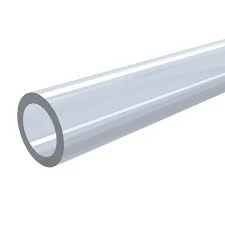Dec . 12, 2024 09:16 Back to list
hdpe conduit pipe
Understanding HDPE Conduit Pipe Advantages and Applications
High-Density Polyethylene (HDPE) conduit pipe has emerged as a favored choice across various industries due to its numerous benefits and versatile applications. Made from synthetic resin, HDPE conduit pipe is known for its excellent properties, which make it suitable for a wide range of uses, particularly in construction and infrastructure.
What is HDPE Conduit Pipe?
HDPE conduit pipe is a type of piping made from high-density polyethylene, a thermoplastic that provides a robust solution for protecting electrical wiring and telecommunications cables. Utilizing an extrusion process, HDPE pipes are manufactured in various sizes and colors, making them adaptable for diverse requirements. They are typically used to create underground conduits for both utility and communication lines.
Key Advantages of HDPE Conduit Pipe
1. Durability One of the most significant advantages of HDPE conduit pipe is its durability. The material is resistant to impact and can withstand harsh environmental conditions, including extreme temperatures and various chemical exposures. This resilience ensures the longevity of installations, reducing the need for frequent replacements.
2. Flexibility Unlike traditional piping materials such as PVC or concrete, HDPE is remarkably flexible. This flexibility allows for easy installation in challenging sites, particularly where the terrain is uneven or rocky. Furthermore, it can bend without breaking, accommodating shifts in the ground without compromising its integrity.
3. Corrosion Resistance HDPE conduit pipes are not susceptible to rust or corrosion. This quality extends the life span of the pipes and keeps maintenance costs low. With the ability to handle moisture effectively, they are ideal for underground installations where water exposure is inevitable.
4. Lightweight The lightweight nature of HDPE makes it easier to transport and handle during installation. This can lead to reduced labor costs and quicker installation times, enabling projects to be completed more efficiently.
5. Cost-Effectiveness Over time, the durability and low maintenance needs of HDPE conduit pipe contribute to significant cost savings. While the initial investment may be comparable to other materials, the long-term benefits of reduced repair and replacement costs make HDPE a financially prudent choice.
hdpe conduit pipe

6. Environmental Impact HDPE is a recyclable material, making it more environmentally friendly compared to non-recyclable options. The ability to repurpose HDPE at the end of its lifecycle aligns with sustainable practices increasingly prioritized in construction and manufacturing.
Applications of HDPE Conduit Pipe
The applications of HDPE conduit pipes are extensive, reflecting their versatility in various sectors
- Telecommunications HDPE conduits are widely used for the installation of fiber optic cables, protecting the delicate lines from damage and ensuring optimal performance in data transmission.
- Electric Utilities Electrical contractors often use HDPE for underground electrical installations. Its ability to withstand high temperatures and electrical loads makes it an ideal choice for protecting wires and cables.
- Stormwater and Drainage Systems HDPE pipes are effective in managing stormwater runoff and drainage, providing a reliable solution for directing water flow away from roads and infrastructure, thus preventing flooding.
- Oil and Gas Industry The durability and chemical resistance of HDPE conduit pipes make them suitable for transporting oil and gas, where safety and reliability are paramount.
- Industrial Applications Various industries utilize HDPE conduit pipes for the safe transportation of materials and fluids, owing to their strength and resistance to a range of chemicals.
Conclusion
In summary, HDPE conduit pipe presents a versatile, durable, and cost-effective solution for numerous applications across diverse industries. Its enhanced properties, including resistance to corrosion, flexibility, and lightweight nature, make it an attractive alternative to traditional piping materials. As infrastructure continues to evolve, the role of HDPE conduit in enhancing reliability and efficiency in communication and utility services will undoubtedly grow, further solidifying its place as a leading choice in modern construction practices. Whether used in telecommunications, electrical installations, or environmental management, HDPE conduit pipe stands out as a preferred solution that meets the demands of today’s industrial landscape.
-
High-Quality PPR Pipes and Fittings Durable ERA PPR & PVC PPR Solutions
NewsJul.08,2025
-
Black HDPE Cutting Board - Durable, Non-Porous & Food Safe HDPE Plastic Cutting Board
NewsJul.08,2025
-
High-Quality CPVC Panel Durable HDPE & PVC Panels Supplier
NewsJul.08,2025
-
Double PE Welding Rod Supplier - High Strength, Durable & Versatile Welding Solutions
NewsJul.07,2025
-
High-Quality PVC-O Pipe Supplier Durable 75mm PVC Pipe & Connections Leading PVC Pipe Company
NewsJul.07,2025
-
HDPE Drainage Pipe Supplier – Durable & Corrosion-Resistant Solutions
NewsJul.06,2025

